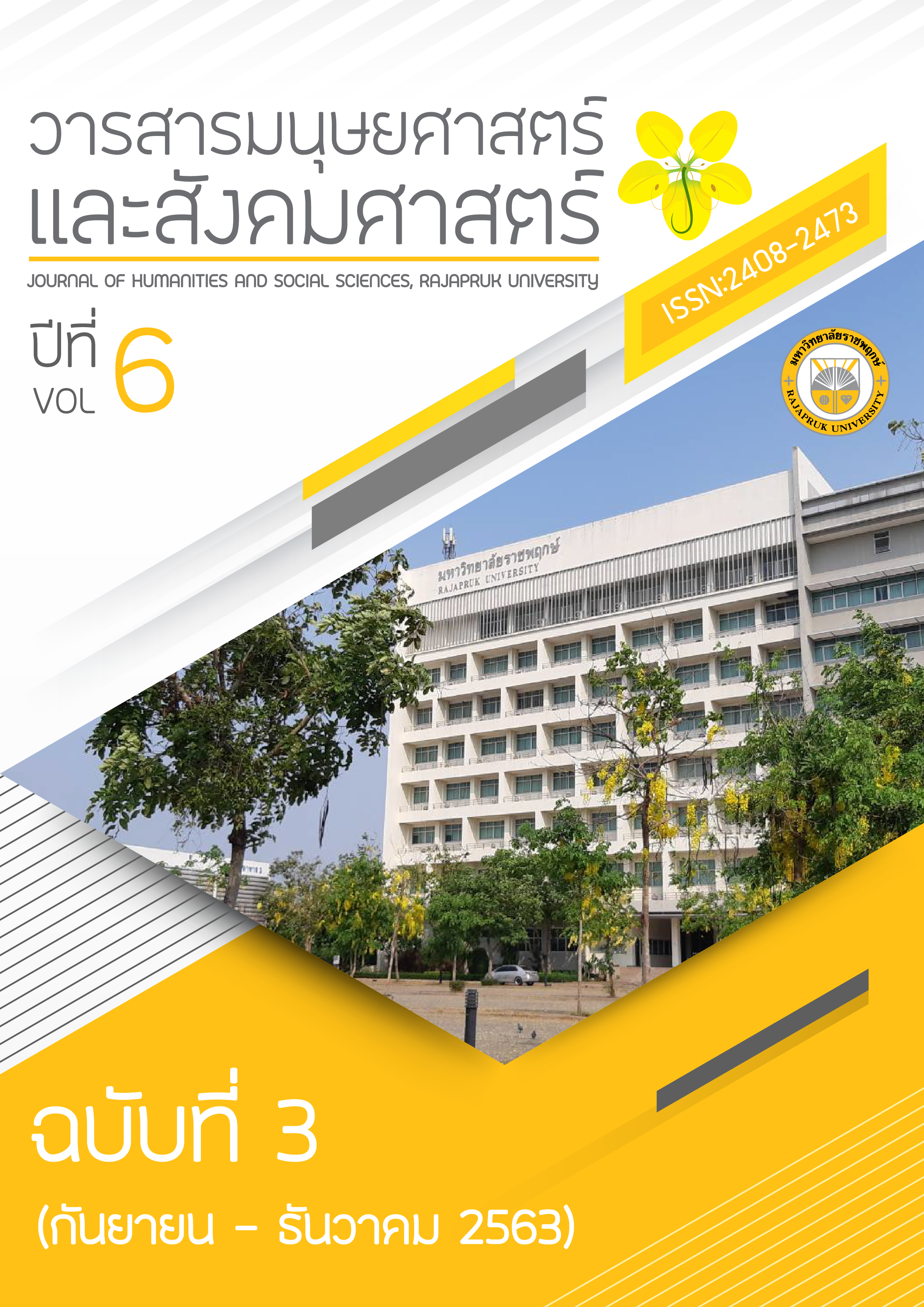Quality of Work Life Affecting Work Motivation among Nursing Lecturer in The Faculty of Nursing, under Higher Education Institution
Main Article Content
Abstract
The purposes of this research were to study, 1) quality of work and work motivation among nursing lecturer in the faculty of nursing, under higher education institution, and 2) quality of work life of nursing lecturer affecting to work motivation among nursing lecturer in the faculty of nursing, under higher education institution. The samples were 210 nursing lecturers. The research instrument was a questionnaire regarding the quality of work life based on the concept of Walton and work motivation base on the concept of Herzberg. The statistics were frequency, percentage, mean, standard deviation, and Stepwise Multiple Regression Analysis.
The research findings revealed that: 1) quality of work life and work motivation among nursing lecturer in the faculty of nursing, under higher education institution as a whole were found at a high level, and 2) quality of work life of nursing lecturer including with adequate and fair compensation, social integration in organization, safe and healthy environment affect to the work motivation among nursing lecturer in the faculty of nursing, under higher education institution. As shown in the equation;
Ytot = 0.1848+0.254X1+0.179X5+0.198X2
Article Details
References
ชินกร น้อยคำยาง และ ปภาดา น้อยคำยาง. (2555). ปัจจัยที่ส่งผลต่อดัชนีความสุขในการทำงานของบุคลากรในสำนักหอสมุดกลาง มหาวิทยาลัยศรีนครินทรวิโรฒ. รายงานการวิจัย. มหาวิทยาลัยศรีนครินทรวิโรฒ.
บุญญาภา โพธิ์เกษม. (2558). อาจารย์พยาบาลกับความสุขในการทำงาน. วารสารพยาบาลกระทรวงสาธารณสุข. 25(1): 13-24.
ผจญ เฉลิมสาร. (2561). คุณภาพชีวิตการทำงาน. ค้นเมื่อวันที่ 10 กรกฎาคม 2561, จาก http://www.m-society.go.th/document/article/ article_3489.doc
มณีรัตน์ ภาคธูป และ กัลยา ศารทูลทัต. (2561). การขาดแคลนและการคงอยู่ของอาจารย์พยาบาลในสถาบันการศึกษา. วารสารการพยาบาลและการศึกษา. 11(3): 1-9.
มหาวิทยาลัยธรรมศาสตร์. (2555). ค้นเมื่อวันที่ 16 กรกฎาคม 2561, จาก file://C:/Users/user/Downloads/Documents/teaching55.pdf.
รัชนีพร ไชยมิ่ง. (2558). การพัฒนากลยุทธ์เพื่อเสริมสร้างแรงจูงใจในการคงอยู่ในงานของอาจารย์วุฒิการศึกษาระดับปริญญาเอก วิทยาลัยพยาบาลสังกัดสถาบันพระบรมราชชนก กระทรวงสาธารณสุข. วารสารการพยาบาลและการศึกษา, 8(4): 94–113.
Best, J. W. (1993). Research in education. 4th ed. Eaglewood Cliffs, NJ: Prentice Hall.
Cascio, W.F. (2005). Managing Human Resources: Productivity, Quality of Working Life, Profits. New York: McGraw – Hill.
Evans, J.D. (2013). Facture Influencing Recruitment and Retention of Nurse Educators. Report by Current Nurse Faculty. J. Prof Nurs, 2013(20): 11-20.
Guest, Robert H. (1992). Quality of work life – Learning from Tarrytown. Harvard Business Review, 57(4): 76-77.
Herzberg, Frederick. (1968). One More Time: How do You Motivate Employees?. Harvard Business Review, 46(1): 53–62.
Krejcie, Robert V. and Daryle W. Morgan. (1970). Determining Sample Size for Research Activities. Journal for Education and Psychological Measurement. No.3 (November, 1970): 608.
Moulton, P., Wakefield, MK. (2007). Nurse Faculty Recruitment and Retention Project. Dakota: Dakota Medical Foundation.
Shockness, S. (2015). Faculty Perspectives on Factors Impacting Work as Nurse Educators. Dissertations. Menapolis: Walden University.
Srisuphan, W., Sawaengdee, K. (2012). Recommended Policy-based Solutions to Shortage of Registered Nurses in Thailand. Thai Journal of Nursing Council, 2012; (27): 5-12.
Thailand Nursing and Midwifery Council. (2018). Nursing Council Regulations on the Accreditation of Nursing and Midwifery Institutions Retrieved on 16th July, 2018, from: https://www.tnmc.or.th/images/userfiles/files/K004.pdf.
Walton, R.E. (1975). Criterion for Quality of Working Life. In DAVIS, L. E. et al. Quality of working life: problems, projects and the state of the art. New York: Macmillan.


